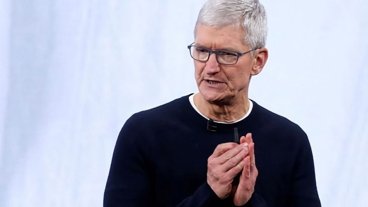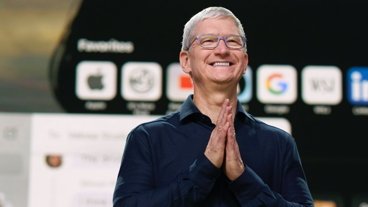Apple's gross margin may be "biggest swing factor" next week
"We believe the gross margin will be the key metric to watch and biggest swing factor on earnings per share (EPS) dependent on Apple's ability to capitalize on component pricing," American Technology Research analyst Shaw Wu wrote in a note to clients Thursday.
Wu, who's modeling the Cupertino-based company to beat its 33 percent margin guidance by about 50 basis points, recalled that favorable commodity prices and other "inputs" failed to translate into gross margin upside last quarter.
"Investors chose to ignore this and gave Apple a 'free pass,'" he said. "Given the macro environment, this quarter investors may not be so forgiving."
Specifically, the analyst noted that gross margin saw a significant downtick during the company's March quarter, falling 175 basis points sequentially and 219 basis points year-over-year to a five-quarter low of 32.9 percent. The decline was a surprise and "not well explained," he said.
His forecast of a 60 basis point sequential increase to 33.5 percent is partially based on checks that show pricing of key components such as NAND flash, DRAM, and hard drives, to have declined during the June quarter "seasonally, if not more."
Some other key points to watch out for during next week's quarterly report are the mixture of Apple's Mac sales and the impact of the company's ongoing back-to-school promotion, Wu said.
"The June quarter usually sees some low-end mix shift in advance of back-to-school sales," he told clients. "While Mac average selling prices (ASPs) have risen the last two quarters, we forecast a $90 sequential decline (to $1,438)."
Pricing is similarly impacted by the back-to-school promotion, which offers students a rebate for a free iPod touch with purchase of a new Mac. Last year's sequential decline was about $60 as a result of a similar promotion, though in 2006 the decline was only $7.
"The cost of the rebate is applied contra-revenue against the Mac and iPod sale on a pro-rata revenue basis. For instance, an iPod wholesale price of $210 and gross margin of 65 percent would imply $137 contra-revenue to Apple," Wu explained. "Assuming the Mac ASP is $1,200 for the sale (students usually lower the company average) means 85 percent or $116 contra-revenue is applied to the Mac business and $20 to iPod business."
Overall, the AmTech analyst is modeling Apple to earn $1.10 per share on revenues of $7.3 billion, fueled by sales of 2.5 million Macs, 10.5 million iPods, and 705,000 iPhones. This compares to Apple's guidance of 1.00 in EPS on sales of $7.2 billion, and the Street's consensus of $1.07 in ESP on $7.3 billion.
"We continue to see Apple as the best play on digital media in the home and a large beneficiary of the shift to mobile computing. In two of its three big franchises, Mac and iPhone, penetration is very low and starting in the higher-income demographics," he told clients. "The disturbance in the macroeconomic environment is within lower-income demographics and financial institutions with exposure and impact to overall liquidity. This could certainly spread, but we believe Apple’s business will remain strong in the near- to medium-term. Enough high-end consumers are still buying tech."
Wu reiterated his Buy rating and $220 price target on shares of the Mac and iPhone maker.
 Sam Oliver
Sam Oliver










 Wesley Hilliard
Wesley Hilliard
 Andrew Orr
Andrew Orr



 Amber Neely
Amber Neely

 William Gallagher
William Gallagher







